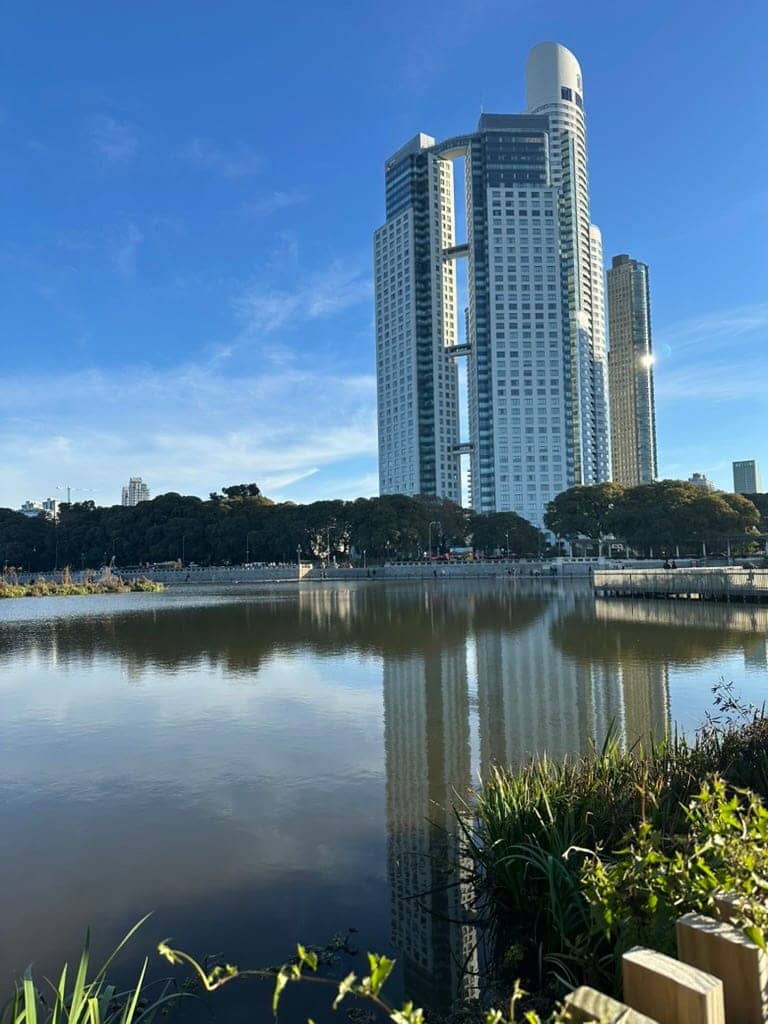
Switzerland at ease: trains, valleys and the elegance of a country that works without fanfare

A slow logbook of panoramic trains, alpine villages and medieval fortresses. Beyond the clichés of watches and chocolate, Switzerland reveals its depth.
A nation of transitions
With four official languages and strong cantonal autonomy, there is no single Switzerland. Nor a single way to discover it. On this journey, we chose to avoid the big cities and focus on the south.
For two weeks we travelled on its famous trains: precise, elegant, silent. We added funiculars that climb mountains, cogwheel trains, and boats tracing routes along millenary shores. We discovered that Switzerland is understood through transitions: from one canton to another, from one language to the next, from snow to flowers, from silence to street fairs with live music. To understand Switzerland is to accept change as the rule, and contrast as its identity.
From Ticino to the line of glaciers
The route began near Lake Como, at the border between the canton of Ticino and the south of Graubünden, where we boarded the Bernina Express bound for St. Moritz.
The train climbs from Val Poschiavo, a green and Mediterranean region which, though fully Swiss, speaks Italian and lives at its own rhythm. Its agricultural terraces and gentle landscape contrast with the glacial world that opens up at altitude.

Crossing Ospizio Bernina (2,253 m) is not only the highest point of the route, but also a geographical threshold. Beside it, Lake Bianco—milky white from the minerals of the Palü glacier—contrasts with the darker Lake Nero, as if water itself spoke in different tones. Their colours tell a bifurcated story: the waters of the Bianco flow towards the Adriatic, while those of the Nero run to the Danube and the Black Sea. At this point, even the language shifts: we left Italian behind and entered the Romansh-speaking zone of Graubünden.
St. Moritz and luxury without belonging
In contrast with Italy, St. Moritz felt somewhat soulless. Perhaps because of the distance imposed by extreme luxury; perhaps because the snow season was ending. When belonging is measured through consumption, the place loses depth.
We preferred instead the image of the frozen lake yielding under the spring sun, and walking around it to see the mountains from every angle. It was a tactical pause: enough to observe without being absorbed.
The Glacier Express and history in motion
The following morning we boarded the Glacier Express, Switzerland’s most iconic train. For eight hours we did not simply cross the country: it was more than a journey, it was a display.
From the geometric void of the Rhine Gorge to the snow-covered Oberalp Pass where only the wind could be heard. In Disentis, the canton’s oldest monastery taught us that the word münster—familiar from Germany’s Black Forest—comes from the Latin monasterium: long before the Confederation there was life, frescoes, and onion-domed architecture.
In Trun the 14th-century peace treaty that gave birth to unified Switzerland was signed. In Andermatt, where trains, roads and tunnels converge, stands the Saint Gotthard Pass, the country’s backbone.
Every window of the train brought a new lesson: a typical dish (capuns), a 17-kilometre tunnel, an energy fact (60% of Swiss electricity comes from water, and nuclear plants will close in 2025). Each fact was not just information: it was part of the way Switzerland reveals itself. Everything had weight. Everything had form.
Zermatt: the alpine village par excellence
Arriving in Zermatt was entering another dimension. The Matterhorn, omnipresent, seemed to guard not only the Italian border, but also the skiers still enjoying a long season. Late snow had piled up more than five metres, a mantle that still descended the slopes.

We walked among ancient dark wooden houses with stone bases, not only in Zmutt but also in the village centre, where ancestral forms coexist with the technical sophistication of the present.
On the hikes towards Furi we passed through two hamlets where we learned that these 15th-century structures—mountain shelters for shepherds and peasants—were raised on pillars with round stones designed to block rodents. Their larch walls, blackened by time, remain firm; their stone-slab roofs protect the buildings through centuries.
A small museum on high-altitude farming taught us about rye, transhumance and the harsh life of those who lived here long before tourism. Switzerland was not always wealthy: it was, first, resilient.
The transport systems to the summits are feats of engineering that operate with almost invisible elegance. The modern, silent Matterhorn Glacier Paradise cableway took us up to 3,883 metres: the highest point in Europe accessible without climbing. From there, with temperatures below zero, we looked over more than thirty 4,000-metre peaks and fourteen glaciers stretching across Switzerland, Italy and France.
By contrast, the old cogwheel train to Gornergrat carried us to 3,089 metres. The view opened to new peaks and other faces of the Matterhorn. We had planned to stay two hours but spent the entire day. Not only for the imposing presence of the Matterhorn, but for the amphitheatre of glaciers unfolding around it.
Accumulated snow blocked the planned trails, but revealed another way of seeing the mountain: the silence of the Gorner glacier, extended like a tongue that cracked and groaned as it descended, demanded pause. We picnicked on a bench among the ice, while alpine choughs tried to steal our lunch. We listened to the wind filtering between the peaks: a silence that was not absence, but the full presence of place.
We also visited the mountaineers’ cemetery, where the dates of the first expeditions spoke of risk, skill and will. Fascinatingly, we learned that while the Swiss side has permanent life, the Italian side has no settlements, though it hosts a dense network of slopes, refuges and high-altitude restaurants. A mountain “empty” of villages is, in fact, intensely lived through sport.
We shared a local soup with skiers arriving from the other side. Advertised in German as “grandmother’s soup”, it was more than food: it was a meeting point, a shared gesture in a landscape crossed on skis or boots.
Vaud and the Swiss Riviera
From there we packed to cross into the canton of Vaud. It was more than a language change. Everything softened: the Lavaux terraces, paths lined with wildflowers—and others meticulously planted—, boats anchored before Art Nouveau villages.
In Les Avants we looked for daffodils; in Clarens we descended on foot through lime trees; and on Lake Geneva we sailed on a Belle Époque steamboat still propelled by its original oil machinery, like a floating museum. Glasses of local wine served in deckchairs on the upper deck made the journey unforgettable.
Montreux surprised us with its floral display. Tulips of every shape and colour, arranged with almost curatorial aesthetics, turned the lake promenade into a moving garden. Running there at dawn was revealing: I saw bulbs being changed, new aromas rising from aromatic beds, spring organised with method and care.
Higher up, on the slopes, we saw what the late snow had hidden in Zermatt: transhumance. Sheep and cows with bells ascending to fresh pastures marked the season with ancestral precision.

Lavaux was perhaps the perfect summary of Swiss contrast: vineyards cultivated for centuries where 98% of the wine is consumed domestically. A local jewel thriving thanks to three suns: the one in the sky, the reflection from the lake, and the heat the terraces’ stones release at dusk.
Everything seemed to obey a secret logic: the logic of care.

Borders, fortresses and the art of passage
Before becoming a tourist destination, Switzerland was a passage: a geography to cross, but also to defend. We visited castles such as Chillon, on Lake Geneva, and those of Bellinzona, whose fortified trio—Castelgrande, Montebello and Sasso Corbaro—speaks of a time when borders were not abstract lines but points of watch, toll and shelter.
In Bellinzona, their strategic arrangement follows a logic of surveillance dating back to Roman times, perfected in the 15th century by the Dukes of Milan—first the Visconti, then the Sforza.
Further west, Chillon Castle controlled traffic along the narrow path skirting cliffs between Vaud and Valais. It is no coincidence that nearby lies the Saint-Maurice Pass, a historic gateway to the upper Rhône Valley.

These fortresses remind us that the Alps are not only a natural barrier but also a network of strategic corridors. Switzerland is a land of passes: Gotthard, Bernina, Simplon, Oberalp. Paths once used by people, armies and goods—sometimes slowly, sometimes stealthily, sometimes with warrior spirit.
Today, where customs stood, there are platforms. Where there was control, there is crossing.
Lugano and Locarno: the south also exists
Back in Italian-speaking Switzerland, Lugano reminded us that the south also exists. We walked its main avenue, among elegant shops and noble façades, down to Parco Ciani, where benches face the water with serenity. We rented a boat and crossed beyond the Italian border: an unmarked frontier, visible in the tones of houses, the shape of hills, the music in the background.
We ended in Locarno, between a food-truck fair in Piazza Grande and the solemnity of the Santuario della Madonna del Sasso. Built after friar Bartolomeo Piatti claimed to see the Virgin on the rock in 1480, the sanctuary rises above a town that today combines baroque masses above with street food below. That simultaneity—between the elevated and the earthly, the Swiss and the Italian, the precise and the lived—was perhaps the best synthesis of the trip.
Valle Verzasca: a Switzerland without showcases
We closed the journey in Valle Verzasca, built around the emerald river that gives it its name. Its stone villages are spanned by the Ponte dei Salti, a medieval two-arched bridge at Lavertezzo that seems drawn from a tale.

On the hike to Sonogno waterfall we encountered sculptures carved in tree trunks: part of an artistic trail linking nature, culture and contemporary art with deep respect for the alpine surroundings. A more authentic farewell. More rural. A Switzerland without showcases.
Travelling through Switzerland is not following a straight line. It is accepting that countries are also narrated in layers: by trains, yes, but also by valleys; by impeccable infrastructure, from a punctual bus to a funicular floating among peaks; and by the way everything integrates into the rhythm of landscape.
Switzerland does not impose itself: it works with precision, but it is felt with wonder.
If this read made you want to travel at a slower pace—or to look differently at the world you already know—share it with someone who also appreciates slow rhythms, good trains and stories told in layers.
My itineraries are designed for that: to make you feel, be amazed, learn, and return with memories that cannot be bought.
If you are dreaming of your next journey, write to me.

Want to receive my newsletter? Subscribe to "El Baùl Cultural" on my Substack!
A weekly space for reflection where I share my experiences, expressed through my passions: reading, travel, film, art, politics, and technology.








